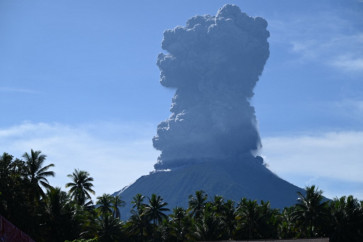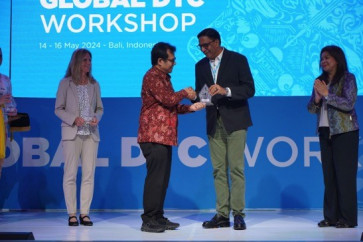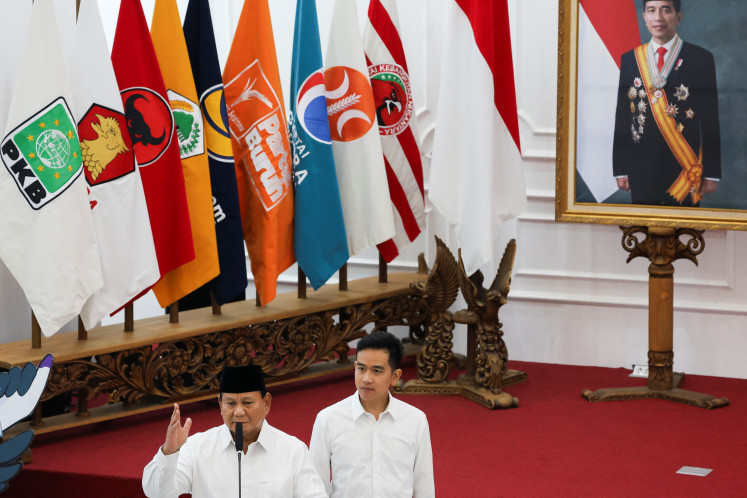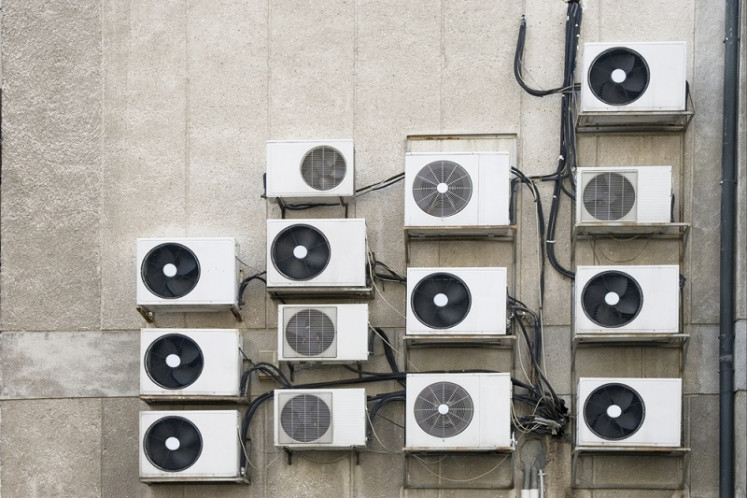What new capital city means for our energy future
Capital idea: President Joko “Jokowi” Widodo (center) and his ministers inspect several designs for a new capital city presented at the Presidential Office in Jakarta
Change Size

C
apital idea: President Joko “Jokowi” Widodo (center) and his ministers inspect several designs for a new capital city presented at the Presidential Office in Jakarta. The new capital would need an estimated 1,555-megawatt power supply. (Antara/Akbar Nugroho Gumay)
Expert analyses of Indonesia’s plan to relocate its capital have been floating around since President Joko “Jokowi” Widodo announced the intended location. The capital will be moved from densely populated Jakarta to the forested environment of North Penajam Paser and Kutai Kartanegara, East Kalimantan.
The 10-year relocation process is expected to move about 1.5 million people, including key civil servants and their families. The impact will be similar to moving the entire population of Semarang in Central Java out of Java.
This would be a monumental project for any government, with complex, overlapping planning requirements.
So, what does this massive relocation mean for Indonesia, particularly with regard to the country’s energy future?
We see two contrasting impacts. First, for the host island Kalimantan, it could mean a boost for local economic growth, along with a much-needed upgrade to the island’s basic infrastructure.
The government has already announced that the design of the new capital features a “forest city” concept to avoid Jakarta’s well-known traffic, pollution and water problems.
The goal is to prevent sprawl and uncontrolled growth. To preserve Kalimantan’s forested land, 50 percent of the new capital will be reserved for green spaces. This will be coupled with integrated public transport, pairing electric vehicles and a railway system.
Additional energy infrastructure will be essential, with an estimated power requirement of 1,555 megawatts (MW).
The good news is that Djoko Dwijatno, general manager of state electricity firm PLN for the East and North Kalimantan region, has already laid out a preliminary plan to supply power to the new capital.
The new capital will rely on the interconnected Barito-Mahakam Kalimantan system for most of its power. According to Dwijatno, PLN plans to design the green power system to rely on renewable sources such as solar and biomass. The grid will incorporate smart grid technology and will embrace battery storage, including charging stations for electric vehicles.
So far, everything seems to be on the right track for the new capital. But there is something missing from the equation: a plan for Java, the island left behind.
Although Jakarta will remain Indonesia’s main business hub, its population and economic growth will change dramatically — at a time when the economy is slowing. The global ratings agencies Moody’s and Standard and Poors have cut their 2020 economic growth forecasts to 4.7 percent.
Therefore power demand will only grow at a snail’s pace after having slowed over the past five years.
Based on the 2019 National Electricity Planning Document (RUPTL), the average growth of electricity consumption in Java over the last five years (from 2014 to 2018) was only 4.4 percent for the interconnected Java-Bali system.
However, the power demand trajectory for 2019 to 2028 shows that the demand forecast is far too optimistic, always higher than the actual by at least one percentage point.
For example, PLN is using a baseline forecast of 5.8 percent to 5.9 percent for the Java-Bali grid over the 2020 to 2022 period.
A one percentage point demand growth error might seem like a small thing, but if you use that assumption to drive the power plan, it can result in a fatal flaw. That’s because the unrealistic demand forecast is used to justify investments in expensive new power generation capacity.
Power sector experts are all aware that the Java-Bali grid has had excess production capacity since 2017. This problem will only get worse over the 2020 to 2024 period when huge increases in inflexible base-load coal-fired power plant (CFPP) generating capacity hit the Java-Bali grid.
Under the current RUPTL plan, there will be approximately 4,827 MW of new CFPP capacity coming online in 2020, 2,000 MW in 2021, 924 MW in 2022, 2000 MW in 2023 and 1,660 MW in 2024.
By the end of President Jokowi’s term in 2024, there will be 11.4 gigawatts of new CFPP capacity coming online in the Java-Bali grid. This surge in high-cost new capacity will come from mega-projects such as the Java-7, Java-5, Java-4, Java 9-10, Banten, Java-1, Java-3 and Indramayu-4 CFPPs, each with capacity ranging from 660 MW to 2,000 MW.
These plants will exact a high price on the system because they are all take-or-pay independent power projects and PLN will have to make a fixed capacity payment regardless of whether the capacity is used. This is a real threat to PLN’s financial health because it will lock excess capacity in the Java-Bali system while demand growth declines.
The forecasting errors and long development lead times that now bedevil the Java-Bali grid are a cautionary lesson for planners focused on the new capital. Flexible system design with carefully formulated pricing incentives is more important than big slabs of fixed capacity.
How do we ensure that residents in both the new and former capitals get the benefit of such innovation? Plans to make the new capital green should not ignore the urgency of efforts to repair the Java-Bali grid or many other underserved areas.
The prerequisite for all of this is a full-system audit of PLN. This can give policymakers an urgently needed picture of what is working in PLN’s system, what needs to be fixed and how the innovations being discussed for East Kalimantan can be deployed to solve system problems elsewhere.
Then, other reforms to improve the transparency of procurement and pricing incentives for users and investors will ensure that long-term partners with a global mindset can play a bigger role in Indonesia’s power sector.
This is the homework that awaits Zulkifli Zaini as the new chief executive officer of PLN.
____________
Energy finance analyst, Institute for Energy Economics and Financial Analysis









